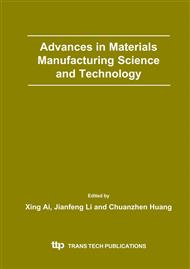p.613
p.620
p.625
p.630
p.634
p.640
p.644
p.649
p.654
Feed Rate and Depth of Cut Influence on Cutting Forces in Diamond Turning Aluminium Alloy
Abstract:
In this paper, a new cutting force model is presented for diamond turning, and the ‘size effect’ is also integrated into this new model. Utilizing this new model, the effects of feed rate and depth of cut on cutting forces are analyzed, the specific law of cutting forces in micro thin-layer metal cutting is investigated at the same time. Through the detailed theoretical analysis and experimental validations, it is found that if the selected feed rate or depth of cut is less than a certain value, a particular phenomenon will appear, thus the thrust cutting force Fp is greater than the principal cutting force Fc, especially when the depth of cut or feed rate is of the same order as the rounded cutting edge radius. For the micro thin- layer metal cutting, the smaller the feed rate and depth of cut, the greater is the influence of these two parameters on cutting forces.
Info:
Periodical:
Pages:
634-639
Citation:
Online since:
December 2004
Authors:
Keywords:
Price:
Сopyright:
© 2004 Trans Tech Publications Ltd. All Rights Reserved
Share:
Citation:


